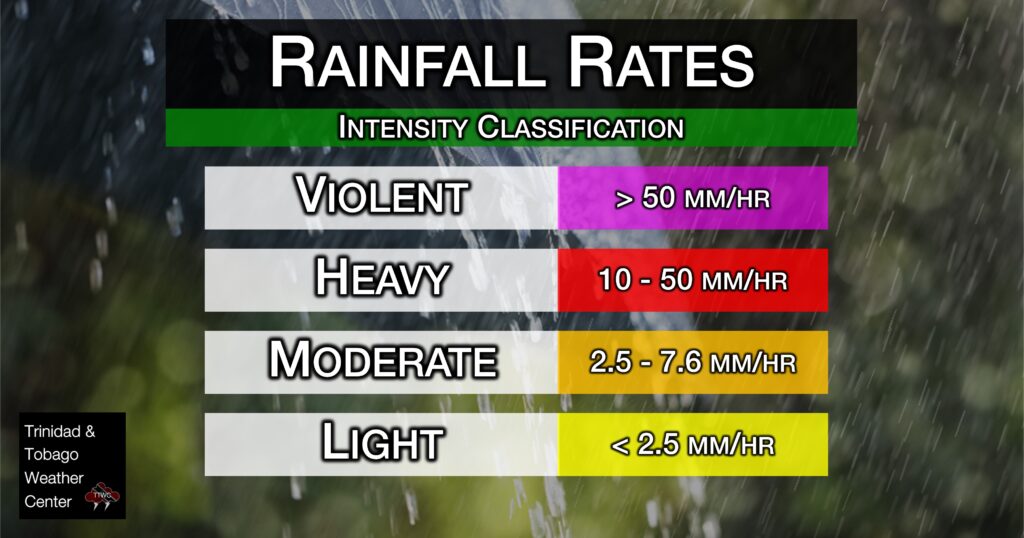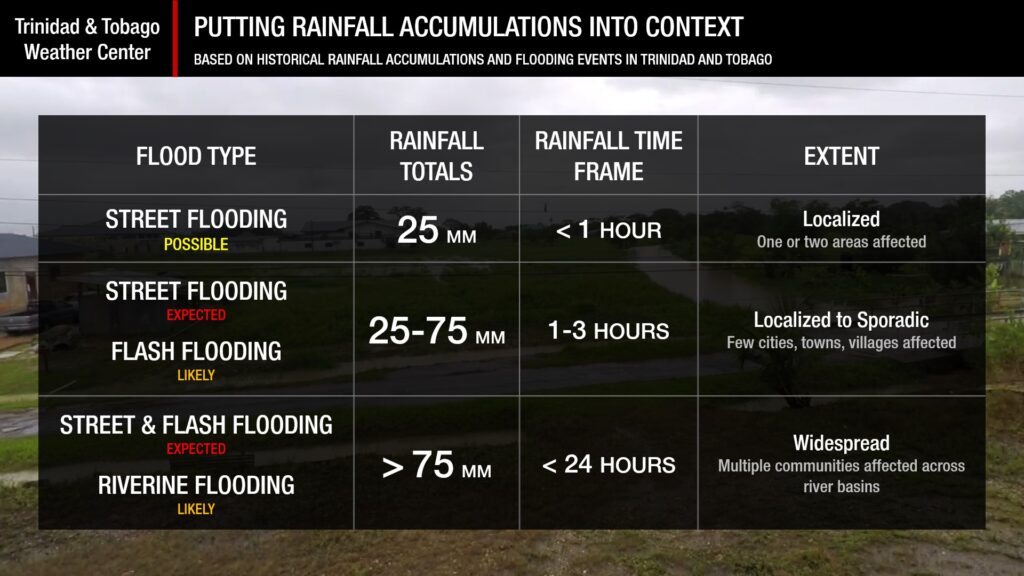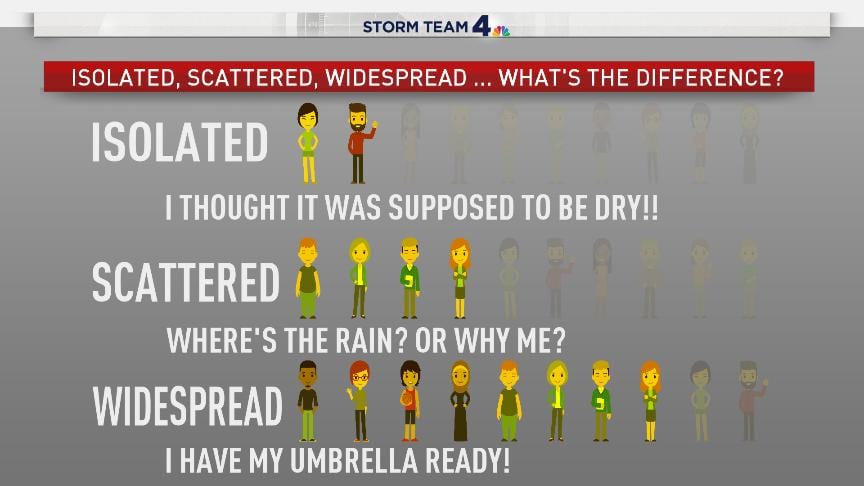A trade wind surge as a result of a stregnthening high-pressure system in the Atlantic is forecast to bring strong low-level winds across the country over the week. As a result, breezy to windy conditions are forecast, with brisk showers bringing gusty winds, particularly on Tuesday.
What you need to know
— Rainfall: Over the next five days, through Friday, January 24th, overall rainfall accumulations across the country are forecast to range between 15 and 35 millimeters. Lower totals are forecast across the western halves of Trinidad and Tobago with high totals across the eastern halves of both islands. In eastern coastal areas, isolated totals between 25 and 50 millimeters are also likely.
— Saharan Dust: Mild to moderate Saharan Dust concentrations are likely from Monday through Tuesday.
— Hazards: Over the next five days, outside of marine hazards, strong low-level winds with gusts exceeding 55 KM/H, mainly accompanying showers, are forecast to reach levels capable of producing minor wind damage such as downing large, weaker trees and causing lighter outdoor objects to become airborne. The threat of flooding is low over the next five days, as showers are forecast to remain fast-moving.
— Marine: Rough seas are forecast in Trinidad and Tobago’s open waters, while choppy conditions are forecast in sheltered areas. All marine interests are advised to exercise caution over the next five to seven days.
Latest Alerts
TTMS Maintains Adverse Weather Alert For T&T
Trinidad and Tobago is NOT under any tropical storm or hurricane threat, watch, or warning at this time.
The Forecast
Monday
MondayTuesday
TuesdayWednesday
WednesdayThursday
ThursdayFriday
FridayMarine Forecast
Slight to Moderate Seas Forecast For T&T
Temperatures
Monday
Low: 23-25°C
High: 30-31°C
Tuesday
Low: 23-25°C
High: 30-31°C
Wednesday
Low: 23-25°C
High: 30-32°C
Thursday
Low: 22-24°C
High: 30-32°C
Friday
Low: 22-24°C
High: 30-32°C
Forecast Impacts
Flooding
Over the next five days, through Friday, January 24th, overall rainfall accumulations across the country are forecast to range between 15 and 35 millimeters. Lower totals are forecast across the western halves of Trinidad and Tobago with high totals across the eastern halves of both islands. In eastern coastal areas, isolated totals between 25 and 50 millimeters are also likely.
Street & Flash Flooding
Street & Flash FloodingRiverine Flooding
Riverine FloodingForecast Rainfall Totals
- Monday: Across the western half of Trinidad, less than 5 millimeters. Across the eastern half of Trinidad and Tobago, between 5 and 10 millimeters, with isolated totals up to 15 millimeters possible.
- Tuesday: Across the western half of Trinidad, less than 10 millimeters. Across the eastern half of Trinidad and Tobago, between 10 and 15 millimeters. In heavy showers across both islands, but mainly along eastern Trinidad. isolated totals up to 25 millimeters possible.
- Wednesday Across the western half of Trinidad, less than 5 millimeters. Across the eastern half of Trinidad and Tobago, between 5 and 10 millimeters.
- Thursday: Little to no accumulating rainfall across the country, with less than 5 millimeters possible, favoring southern and eastern areas.
- Friday: Across the western half of Trinidad, less than 5 millimeters. Across the eastern half of Trinidad and Tobago, between 5 and 10 millimeters.

Understanding Rainfall Accumulations
Putting the rainfall forecast into context, rainfall rates in excess of 50 millimeters per hour or areas that receive in excess of 25 millimeters within an hour tend to trigger street flooding across the country or flash flooding in northern Trinidad. For riverine flooding to occur, a large area of the country (not just in highly localized areas of western coastal Trinidad) would have to record upwards of 75 millimeters within 24 hours, and rainfall would have to fall across major rivers’ catchment areas.

Strong Thunderstorms
Strong ThunderstormsWhat is a strong or severe thunderstorm?
Given how rare these types of thunderstorms are in our region – we classify a severe or strong thunderstorm as one that produces any of the following:
- Damaging wind gusts exceeding 63 KM/H;
- Frequent lightning (more than 30 cloud-to-ground strikes within a 10-minute period);
- Hail (of any size);
- Rainfall of more than 50 millimeters or more within an hour or exceeding 75 millimeters or more within three hours;
- The sighting of a funnel cloud or touchdown of a waterspout/tornado associated with the thunderstorm.
Gusty Winds
Gusty WindsWith wind gusts exceeding 55 KM/H, whole trees can be in motion, with larger trees and weaker branches falling. Light outdoor objects can topple or become airborne, such as garbage cans, loose galvanize, construction material, and outdoor furniture. Tents may also jump.
Other Hazards
With strong winds, the main hazards are across the marine areas, discussed at length in the marine forecast and Hazardous Seas Alert.
Saharan Dust Forecast
Dust-Free Days Ahead For T&T As Saharan Dust Stays North
Why I May Not/Will Not See Rainfall?
A frequent complaint is the forecast is wrong because I didn’t experience any rainfall. Scattered showers mean that you, individually, may experience some showers intermittently throughout the day, and there is a higher chance for this activity than isolated activity. Widespread showers mean that nearly all persons and areas may experience rainfall.
Isolated rainfall is forecast over the next five days.

Forecast Discussion
Over the next five days, the dominant feature across Trinidad and Tobago will be a north-central Atlantic high-pressure system with dominant winds from the east to northeast. Within this ridge flow, a trade wind surge (a surge of winds at the lower levels of the atmosphere) is forecast to move across the Lesser Antilles on Monday through Wednesday. Also within the ridge flow will be pockets of moisture and convergence (low-level cloud patches) that will bring brisk showers and cloudy periods to the country.
However, these winds are forecast to be strong, up to 30 knots or 55 KM/H, particularly on Monday night through Tuesday, pushing showers and cloudy patches along at a similar speed westward. As a result, in showers or periods of rain, gusty winds are likely to exceed 55 KM/H, mainly across Tobago and northern and eastern halves of Trinidad, or where moderate to short-lived heavy rainfall occur.
Global models (lower resolution) shows sustained winds between 35 and 45 KM/H (most likely maximum 40 KM/H), with maximum wind gusts up to 55 KM/H most likely. Though it is a lower likelihood, given storm motions are forecast to be up to 30 knots, and winds aloft are also forecast to be between 30 and 35 knots, higher-resolution models are showing offshore gusts up to 75 KM/H. This is a much lower likelihood scenario, but worth noting, particularly for northern and eastern coastlines.
Winds of this strength can be damaging to weaker structures, large and weaker trees, and may also cause utility lines to “dance” – all of which can lead to localized power outages. In the past, when there is a high chance of wind gusts of this strength, the Trinidad and Tobago Meteorological Service typically issues a High Wind Alert for the country. It remains to be seen if one may be issued for Monday evening through Tuesday evening, the peak of this wind event based on forecast models. A Hazardous Seas Alert has already been issued due to the possiblility of “potentially dangerous sea conditions.“
Some mild to moderate concentrations of Saharan Dust are also forecast to be present on Monday and Tuesday, bringing hazy skies.
Winds are forecast to marginally subside by Wednesday, with the atmosphere at the lower levels becoming increasingly dry. A shearline to the north is forecast to remain north of T&T during the forecast period.
Into the weekend, moisture levels are forecast to increase, being advected from the southeast. Convergence ahead of another trade wind surge on Sunday into Monday, coupled with copious moisture, may lead to wetter-than-average conditions on both days. However, this is still 6-7 days away, so there is lower than usual confidence.
Looking ahead for the remainder of January into February, as the North Atlantic Oscillation’s phase turns positive, stronger trade winds are forecast, which is normal for the Dry Season. As a result, these wind events and possible trade wind surges are to become more common in the coming weeks.












